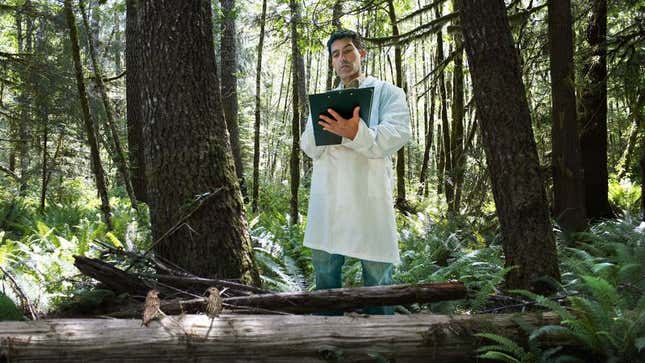
BERKELEY, CA—With not a single scientist having successfully observed the behavior despite extensive ongoing research, the field of biology has made no progress in its understanding of how birds have sex, experts at the University of California told reporters Wednesday.
Through 2,500 years of recorded natural history, hundreds of thousands of hours of fieldwork, and the testing of innumerable hypotheses in regard to the mechanism by which avifauna reproduce, not one instance of bird sex has been reliably documented, photographed, or described, according to the biologists.
“We’ve spent considerable time and effort attempting to unravel the mystery of sex among bird populations, but unfortunately it remains one of the great unanswered questions in our field,” said ornithologist Daniel Abramson, who added that he has studied hundreds of bird species in habitats all across the globe, spending the bulk of his 28-year career staring through binoculars and crouched behind blinds in fruitless attempts to catch them in the act. “We can say for certain that eggs emerge from some part of a bird’s anatomy, and we know baby birds hatch from those eggs. But beyond that, we honestly have no idea how it works.”
“We haven’t ruled out the possibility that the feathers may in fact be the genitals.”
“Do they secrete something onto each other’s feathers and absorb it through their skin?” he continued. “Do they fly very high and have sex so far up in the sky that we’re unable to observe it? At this point, no one can say for sure.”
Abramson’s colleagues echoed his frustration and enumerated the vast array of theories currently being considered. These include the idea that male birds may be fertilizing the eggs in some way after they’ve been laid, as well as the hypothesis that all birds are females that produce clones of themselves. While unable to elaborate any further, the biologists also put forth the possibility that flying in a V formation or perhaps “that thing on turkeys’ necks” has something to do with the process.
A number of experts also reportedly subscribe to the notion that birds are one gender of an entire class of organisms, and bats are the other, complementary, gender.
“Most bird observations occur during the day, but it’s possible that birds are having sex in the middle of the night when it’s very dark and they’re hard to see, or maybe inside clouds where we can’t glimpse them at all—or maybe it occurs both in clouds and at night,” said animal physiologist James Bosley, a proponent of the theory that currently has the most traction among biologists, which suggests that most birds reproduce by flying directly into each other at high speeds. “My own research team is currently looking into whether ducks are doing it under water each time they dip beneath the surface, out of our view.”
“Before that, we looked very carefully at birds that get close to each other and start flapping their wings around a bunch, but it turns out that in those instances they’re usually just pecking at the same piece of food,” he added.
Bosley went on to state that for years, scientists had assumed migratory birds only engaged in sexual intercourse after flying south for the winter, a theory that was later abandoned after a group of North American ornithologists traveled to a conference at the University of São Paulo and met Brazilian colleagues who had long believed the exact opposite to be true.
“At this point, we’re not even sure if birds have genitals,” said Felicia Lopez, a comparative anatomist at the Massachusetts Institute of Technology. “We’ve searched all over their bodies, but there are a lot of feathers down where you would expect something to be, and it makes it pretty hard to see anything. To be honest, though, it doesn’t look like there’s much there at all—just look at how smooth they are. It’s hard to picture where a penis would even go.”
“We haven’t ruled out the possibility that the feathers may in fact be the genitals,” she continued.
Nevertheless, Lopez remarked, biologists remain hopeful, believing that more advanced methodologies will allow them to make the first-ever direct observation of bird sex sooner rather than later.
“It’s only a matter of time before we’re peering through the brush and finally catch sight of birds in the act of copulation,” she said. “As we speak, several of my colleagues are out in the field dressed up like birds and strutting seductively around the animals’ natural habitats in attempts to finally witness bird sex firsthand.”